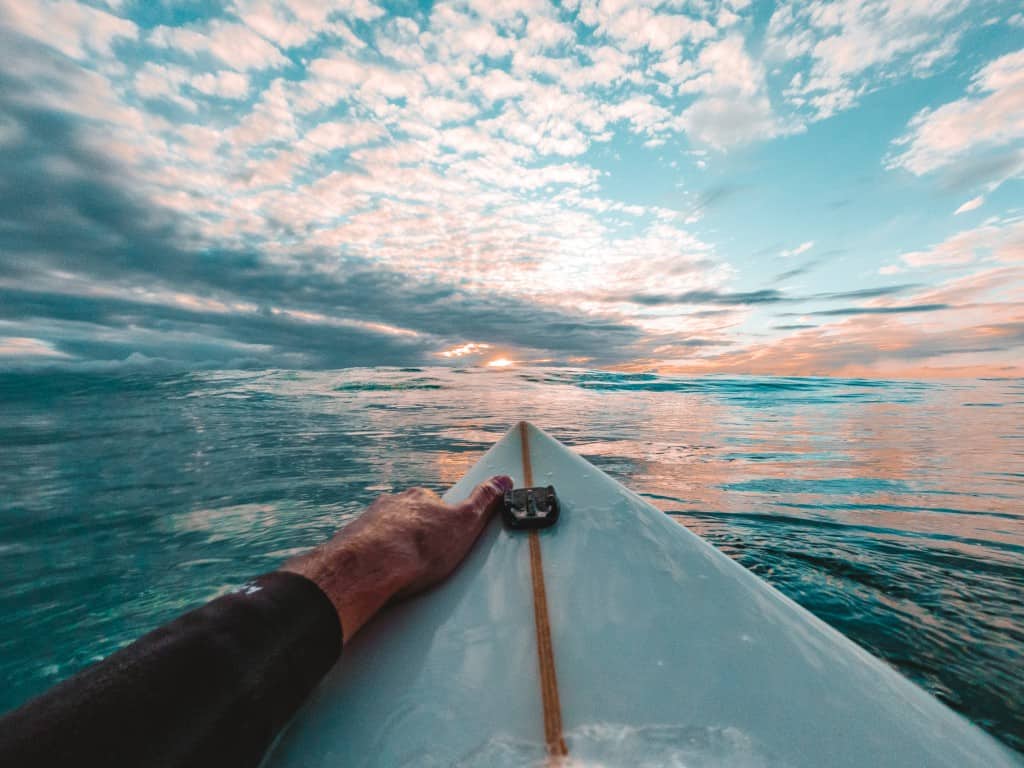Some say that surfing is the ultimate test of will against the power of the relentless sea.
But really, how tough is it to become competent in this beast of a sport?
On a difficulty meter, where do I peg it?
Strap in, because this ride hinges on your grit and the will to check a few vital boxes.
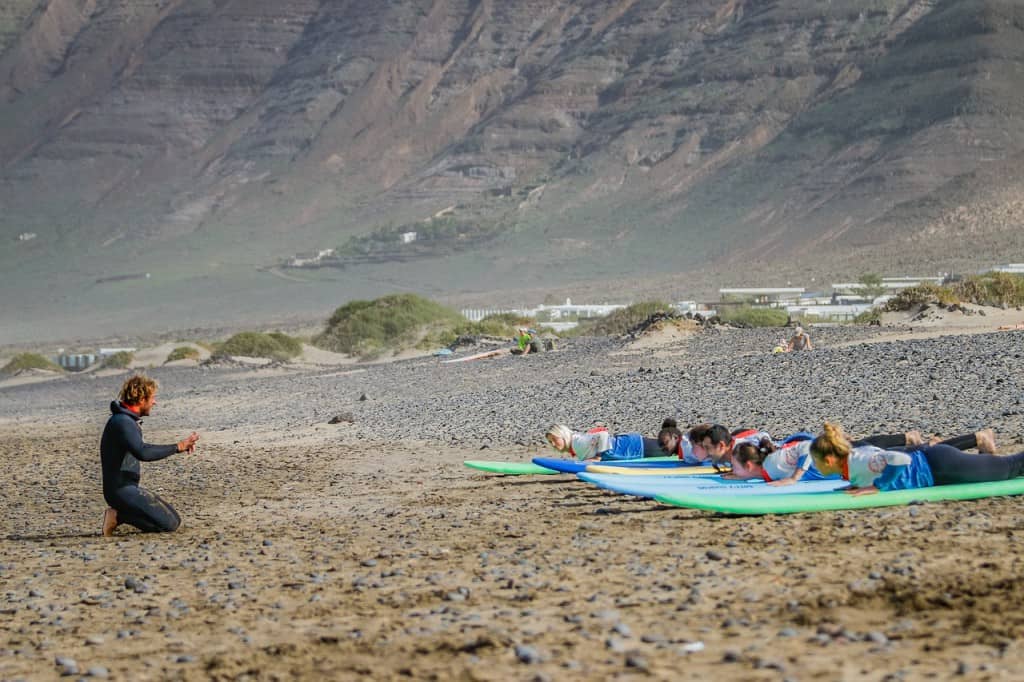
Before you hit the waves: What you’re up against
Here is the good new first. The basics of surfing are a breeze to grasp. Sure, it demands some balancing acts, but nothing Herculean.
As any decent surfer knows and will tell you, surfing’s learning curve is gentler than a summer wave. Some catch on quick; a few find themselves battling the tide, while others, disheartened, abandon ship.
But here’s the moment of truth – when you first stand tall on that board, slicing through the ocean, even for a mere heartbeat, you join the ranks of the sacred surfing kin. Surfing is a craft, an art. At first glance, it looks like a labyrinth of complex manoeuvres, but it’s an open-air escapade, calling to souls young and old.
So, where does learning to surf fall, on my scale of 1 to 10? Let’s peg it somewhere between a 2 and a 7.
Physical fitness is crucial
Paddling out, ducking under waves, and springing to your feet on the board is no lazy river ride. If you’re out of shape, you’ll tire fast and lose interest.
Being light and lithe gives you an edge in popping up on the board, but that isn’t a guarantee that the fittest bod makes you the best surfer. Technique and timing (two things you will learn on your surf journey) are the makers and breakers of catching and riding waves.
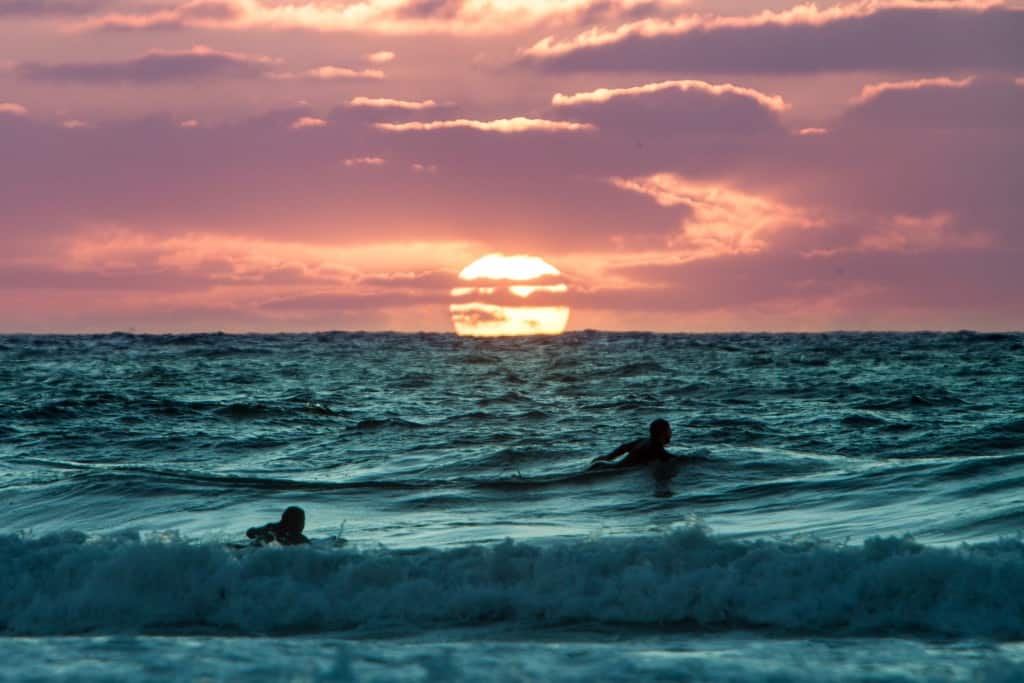
Swimming skills are essential
Surfing is essentially a deep-water dance, so good swimming skills are a must. You don’t have to be a mermaid, but being able to handle yourself in water is crucial.
Even surf gods need to paddle back to shore sometimes so the Golden Rule is; if you don’t feel confident that you can swim back to shore if you and your board get separated, then don’t paddle out.
Most surf schools will teach you the basics in the broken water near to shore. If you’re on the self-taught path, then don’t think that you can skip this step and paddle out to where the cool kids hang out.
Park that ego. Do your time and learn the basics.
Manage your expectations
This is the toughest part. Don’t get swept away by surfing’s glamorous image. Reality check: you won’t be shredding monster waves or getting sponsored and going pro anytime soon. Sure, you can wear the gear and know all the right things to say, but a seasoned surfer will know you’re a novice from your first paddle stroke and will call you out if you’re not right for the surf spot.
Start small – a big board and baby waves. Don’t overthink it. Just ride and feel, and most importantly…be humble.
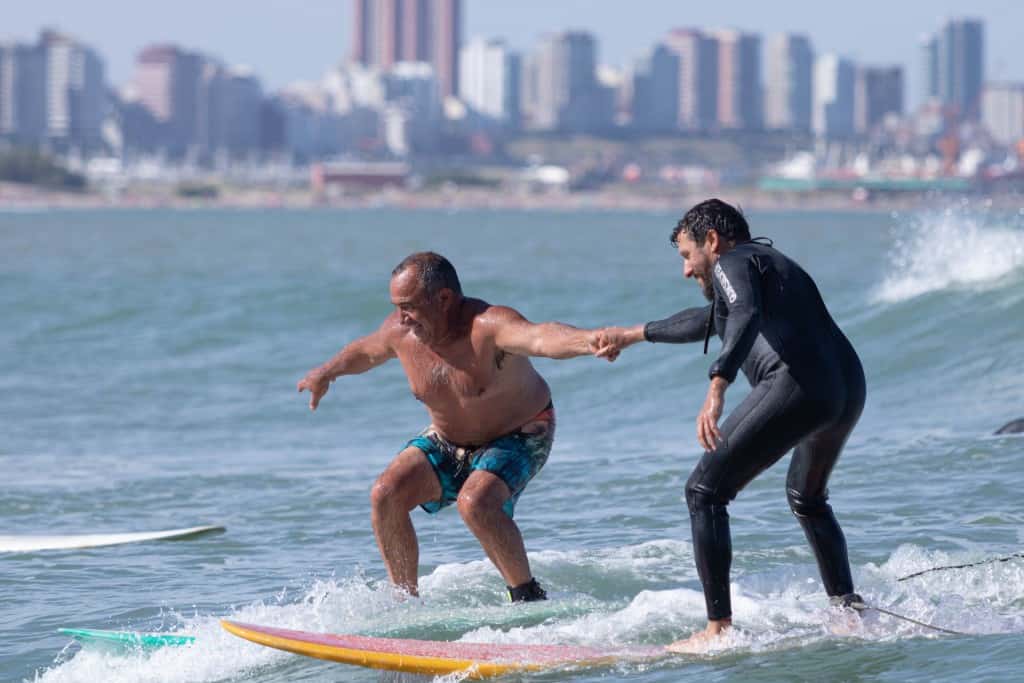
The path to surfing: self-taught or lessons?
Some surfers are lone wolves, learning by watching and doing. Others find gold in the wisdom of seasoned instructors willing to share a tip or two for your cash.
Looking at my own surf voyage, I’d recommend that if you really want to fast-track your journey, then consider surf lessons. A good instructor will guide you through the early stages and help you find your sea legs. The truth is that there are some simple yet essential techniques that save energy, frustration and get you catching more waves. YouTube will get you to someplace as well, but there’s nothing like a qualified surf instructor reminding you of what you’re trying to achieve when waves are pounding on your head.
Relationship with a board
The first challenge is understanding what your board will do for you, and how it can help, or hurt you. It could take a few attempts or hours of trial and error. It’s all part of the surfing saga. That thing that you hope will whizz you down the line isn’t some AI machine that does it all for you. It’s specific in its design for a function that involves you using it correctly.
You didn’t fall off that wave because your board sucked. Stay humble, get back on and paddle out. The board won’t let you down. Its often the inverse.
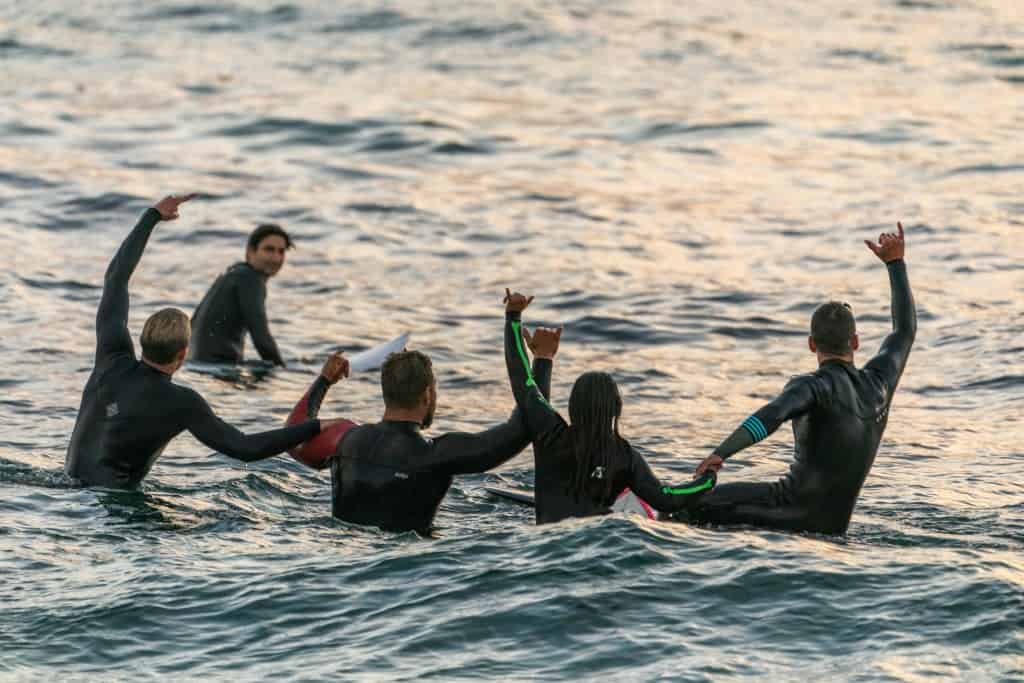
Surf etiquette
Surfing is more than a sport. It’s a mindset for a style of existence when you’re in (and sometimes out) of water. While there aren’t cops in the ocean to regulate what goes on, be sure that rough justice will call if you drop in, snake other surfers, paddle out on the wrong line, or diss a local. Learn the rules. Follow the rules, and always, always, be friendly and humble.
Relax, and ride at your own pace
Pace is personal. Some take to surfing like dolphins, while others need a few more sunsets to get their sea legs. The younger you are, the smoother the ride – but that’s just nature and how things generally go for the younger generation learning new skills quicker.
There are tales of surfing novices who found their groove in an hour, and then those who never managed to conquer a single wave. Don’t lose heart, though. Surfing is easier than it lets on. When the pieces fall into place, it’s a rush like no other.
One key to success? Try to stand on every wave you catch. Muscle memory will kick in, and soon you’ll be riding waves as if born to it. Remember, surfing’s all about joy. If you’re tumbling off the board, laugh it off. You’re doing just fine.
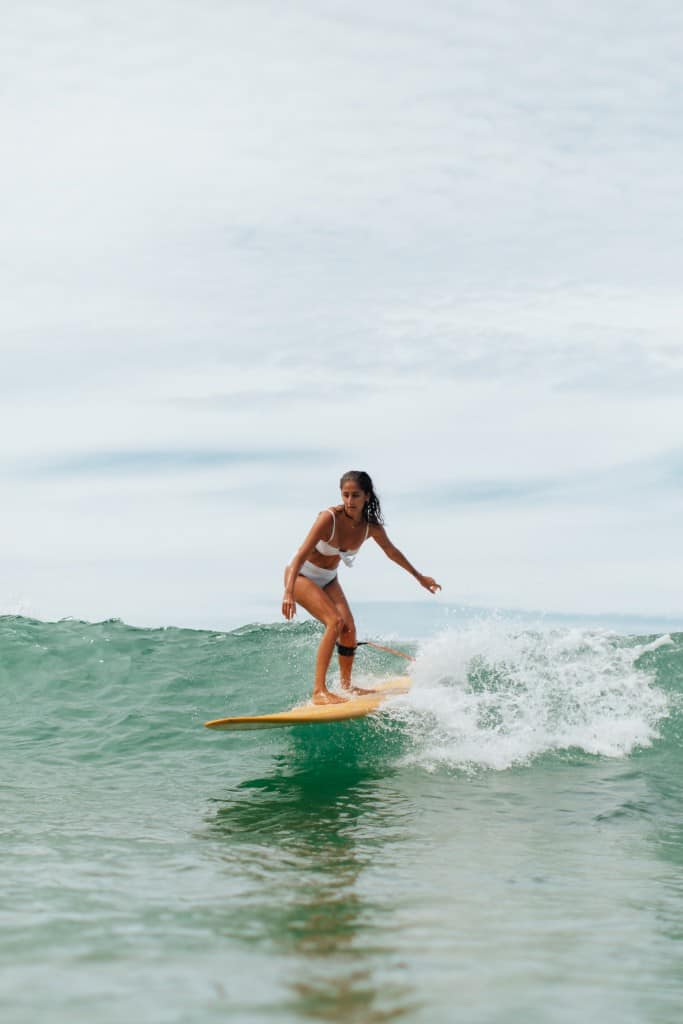
Face a real surf
Once you’ve got the basics down, it’s time to ride the wave’s unbroken face. This is where surfing transforms from just something you’re trying to an indescribable adrenaline rush that will hook you for life. It starts with a good paddle, smart pop-up and nailing a solid bottom turn, a pivotal surfing move, so you can move on to what the wave next offers.
If you’ve experienced this then congratulations – all that effort, all that seawater swallowed, all those long, tiresome paddles, all those missed waves and hours and hours in the water have delivered you to the promised place.
Accessing the unbroken part of a wave? On my difficulty scale, that’s a 3 to 6.
So, how hard is surfing? Not as hard as it looks, or first feels.
More links for surfing:
